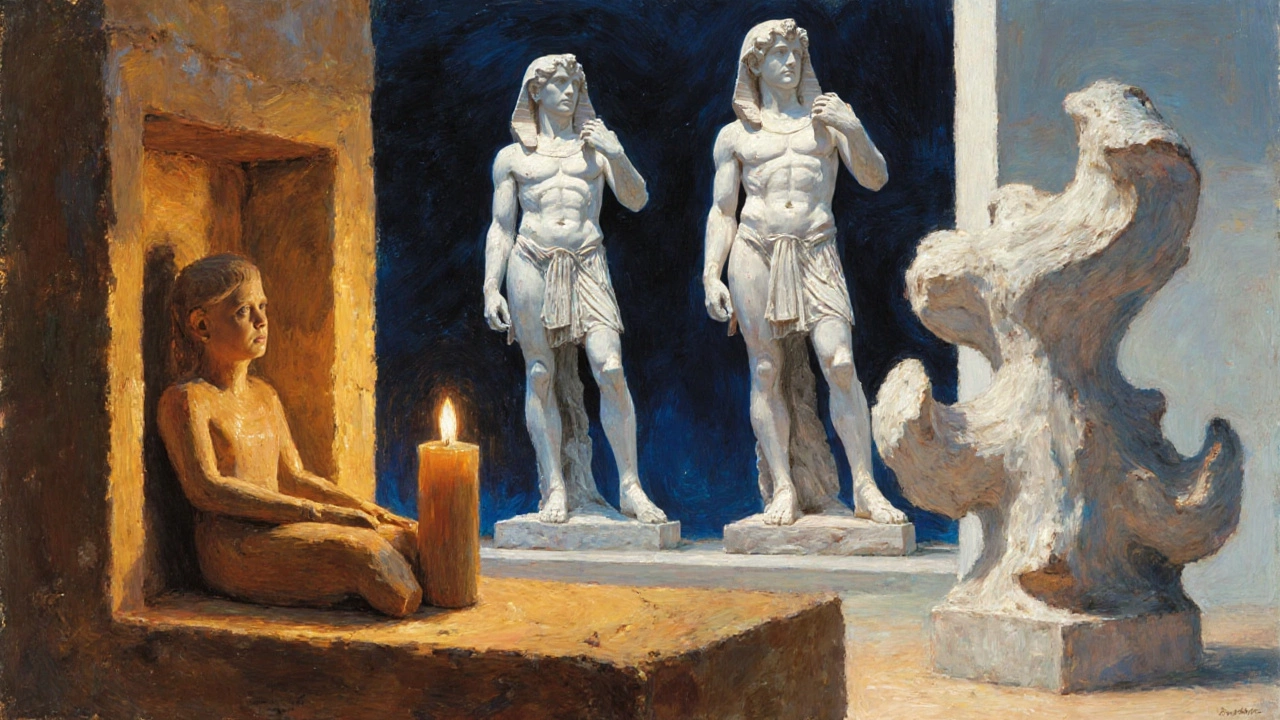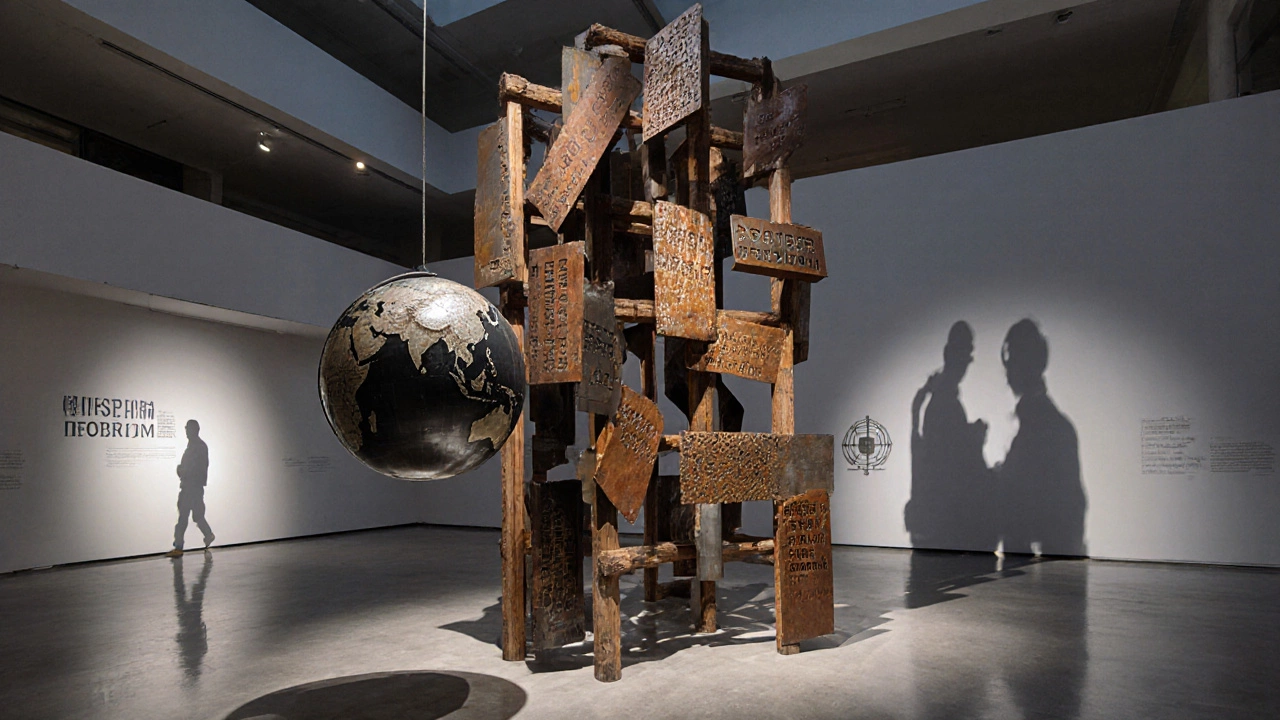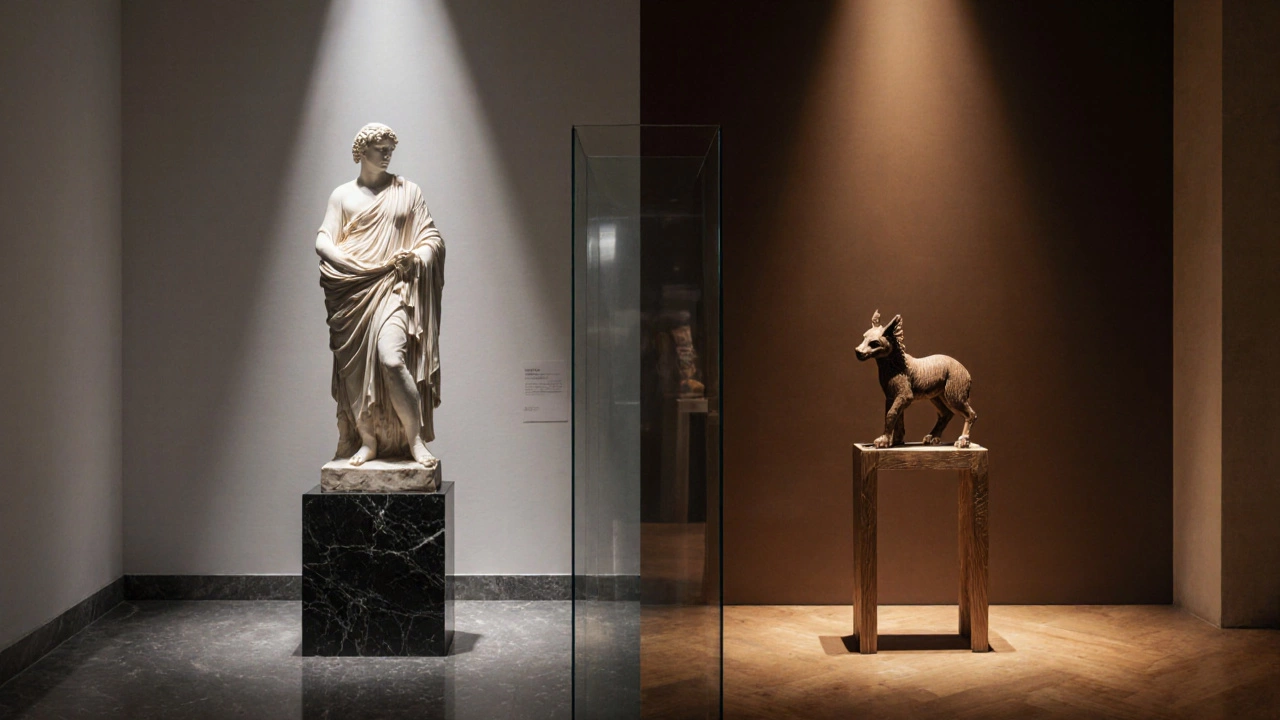Fine Art vs Craft Classification Tool
Sculpture Classification Assessment
Answer the questions below to determine whether a sculpture is classified as fine art, craft, or a hybrid. Based on the criteria from the article, your answers will determine the classification.
Ever stood before a marble figure and wondered whether it belongs in an art museum or a craft gallery? The question of whether sculpture is fine art or craft has sparked debate for centuries, and the answer isn’t as clear‑cut as you might think.
Key Takeaways
- Sculpture can fit both fine art and craft categories depending on intent, context, and tradition.
- Fine art emphasizes aesthetic and conceptual goals, while craft focuses on function and technique.
- Historical periods, cultural values, and market forces all influence how a piece is classified.
- Institutions like museums and UNESCO often set the standards for classification.
- Use the provided checklist to decide where a specific sculpture lands on the fine‑art‑to‑craft spectrum.
What Exactly Is Sculpture?
When you see a Sculpture is a three‑dimensional artwork created by shaping, carving, assembling, or casting materials such as stone, metal, wood, clay, or mixed media, you’re looking at a medium that can be both monumental and intimate.
Key attributes of sculpture include:
- Material: stone, bronze, wood, plaster, plastic, found objects.
- Scale: from pocket‑size maquettes to city‑wide installations.
- Technique: carving, modeling, casting, assemblage, digital fabrication.
- Intent: narrative, symbolic, abstract, functional.
Fine Art vs. Craft - How Do They Differ?
Fine art is art created primarily for aesthetic appreciation, intellectual exploration, and cultural expression, often displayed in galleries or museums. Its value is usually tied to originality and the artist’s vision.
Craft is hand‑made work that emphasizes functional purpose, skilled technique, and material mastery, frequently rooted in cultural traditions and everyday use. The maker’s expertise and the object's utility are central to its worth.
Both categories share the same tools and materials, but they diverge on three main axes: purpose, context, and perception.

Historical Perspective - When Sculpture Swung Between Worlds
In ancient Egypt, a wooden figurine used in burial rites was considered a craft because of its ritual function, yet the same culture produced colossal stone statues that were treated as divine fine art. During the Renaissance, masters like Michelangelo was an artist‑sculptor whose works such as David were celebrated as the pinnacle of fine art. Fast forward to the 20th century, artists in the Studio Craft movement-e.g., Peter Voulkos-blurred lines by creating large‑scale ceramic pieces displayed alongside paintings.
These shifts show that classification often follows the cultural narrative of the time rather than an inherent property of the object.
Criteria Used to Classify Sculpture
| Aspect | Fine Art | Craft |
|---|---|---|
| Primary Purpose | Aesthetic and conceptual expression | Functional or utilitarian use |
| Context of Display | Museums, galleries, art fairs | Markets, homes, cultural festivals |
| Production Method | Often one‑off, emphasis on originality | Repetitive techniques, standards of tradition |
| Market Position | Collected as investment, high auction values | Sold as functional objects, often lower price points |
| Critical Reception | Reviewed by art historians, included in academic discourse | Evaluated by craft guilds, heritage bodies |
These criteria are not absolute. A single piece can meet several fine‑art criteria while also serving a functional purpose, landing it somewhere in the middle.
Real‑World Examples
Consider Rodin’s The Thinker - a bronze sculpture celebrated for its emotional intensity and placed in major art museums worldwide. Its intent was purely expressive, making it a textbook fine‑art example.
Contrast that with a traditional Maori wood carving used in a meeting house. The carving, while artistically sophisticated, serves a ceremonial function and follows a strict lineage of technique, aligning more with craft.
Modern artists like Ai Weiwei create large installations that fuse political statement (fine art) with traditional Chinese woodworking (craft). Their works force us to reconsider the binary.

How Institutions Influence the Debate
Museums are public institutions that curate, preserve, and interpret artworks, often serving as gatekeepers of what is labeled fine art. When a museum acquires a sculpture, it usually signals fine‑art status.
Meanwhile, UNESCO defines intangible cultural heritage, which includes traditional crafts and techniques passed down through generations. Recognition by UNESCO can elevate a craft practice to global cultural importance, blurring the fine‑art/craft divide.
These bodies shape market perception, insurance values, and academic research, reinforcing or challenging existing classifications.
Checklist: Is This Sculpture Fine Art or Craft?
- What was the artist’s primary intention? (Expression vs. utility)
- Where is the piece displayed or intended to be displayed?
- Is the work a one‑off or part of a series adhering to a traditional method?
- How does the market treat it? (Auction records, gallery representation)
- Has an institution (museum, UNESCO) formally recognized it as fine art?
If you answer mostly “expression,” “museum,” “unique,” “high‑value,” and “institutionally recognized,” the sculpture leans toward fine art. If the answers tilt toward “function,” “cultural market,” “repetitive technique,” “affordable,” and “heritage recognition,” it leans toward craft. Many works sit in the middle, and that’s perfectly fine.
Frequently Asked Questions
Can a sculpture be both fine art and craft at the same time?
Yes. Many contemporary pieces blend expressive concepts with traditional techniques, so they occupy a hybrid space. The classification often depends on who’s talking about the work-the artist, a museum, or a craft guild.
How do auction houses price sculptures that are considered craft?
Auction houses assess provenance, material rarity, and the maker’s reputation. Craft pieces can achieve high prices if they are rare, historically significant, or created by a recognized master.
Does the material determine whether a sculpture is fine art?
Material alone isn’t decisive. Marble, bronze, wood, plastic, and even recycled objects can serve fine‑art or craft purposes. The context, intent, and treatment give the material its classification.
Why do museums sometimes exhibit craft objects alongside fine art?
Museums aim to tell broader cultural stories. When craft objects possess strong aesthetic or conceptual qualities, curators place them with fine art to illustrate cross‑disciplinary influences and challenge traditional hierarchies.
Is there a legal definition separating fine art from craft?
Legal definitions vary by jurisdiction. In tax law, for example, some countries treat fine art differently from craft for depreciation and import duties, but most legal frameworks focus on market classification rather than artistic intent.

